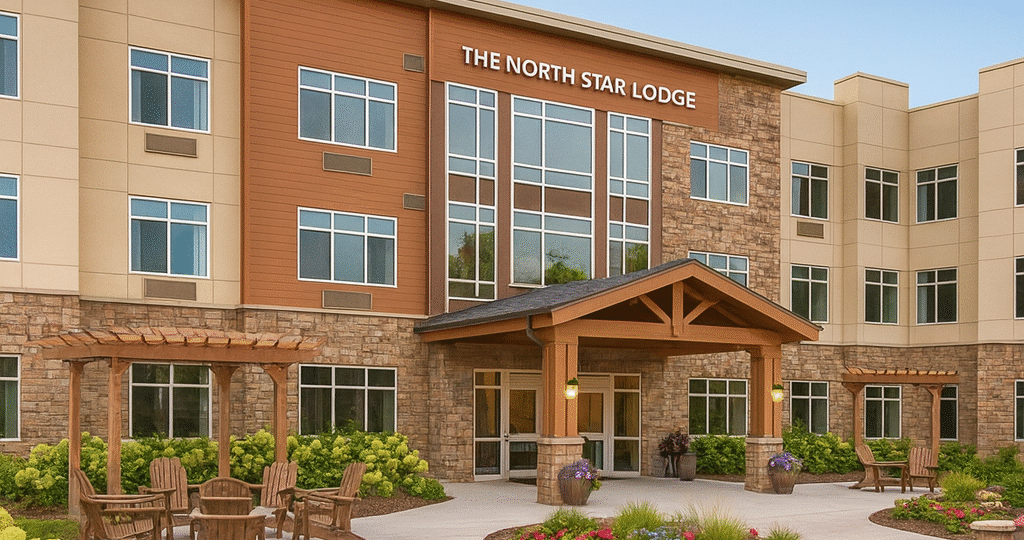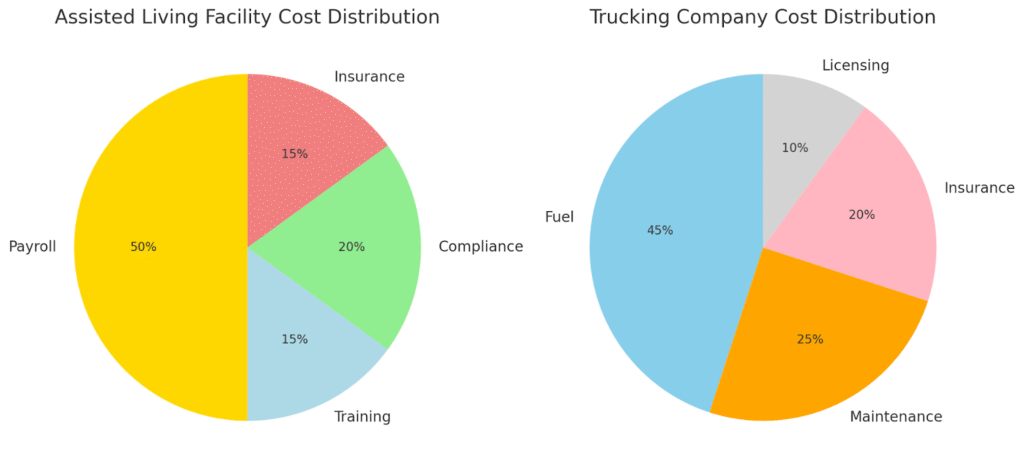
Minnesota Guided Rules of Assisted Living Staffing: Core Directions for Compliance
Introduction to Minnesota Rite of Assisted Living Staffing Requirements
Launching an assisted living facility in Minnesota entails not only creating a home-like supportive environment but also following detailed rules that assure residents safety, dignity, and quality care. According to the Minnesota assisted living staffing requirements, every facility must meet a set of formal expectations minimum staffing levels, caregiver qualifications, training standards, and compliance documentation. Elderly people, people with dementia and other chronic illnesses are some of the state’s most vulnerable populations that benefit from these rules.
Facility managers have to manage the compliance process for operators of direct care staff, available and competent, and also need to deal with other important tasks such as scheduling, recordkeeping, and emergency planning. Just as logistics companies, which own and manage fleets of trucks, provide coordinated schedules and utilization of human resources, assisted living providers must deal with divided and complex schedules, where a worker’s absence could be detrimental. Minnesota assisted living facilities are required to adhere to rules through audits, inspections, and monitoring, which are similar to the safety inspections, driver logs, etc., that freight carriers must have. Entrepreneurs who are looking at how they can establish a nurse staffing agency may find these Minnesota assisted living staffing requirements particularly helpful since they show the relevance of compliance, oversight, and workforce readiness.

Minimum Staffing Levels and Direct-Care Staff
24/7 Staffing Obligations
According to Minnesota law, all licensed assisted living facilities must be staffed around the clock (24/7). Therefore, there must always be at least one awake and available staff member who can immediately respond to emergencies including visiting at night. Staff members who work at night are supposed to be trained and carry the necessary medical equipment to ensure that they can cope with any situation including dealing with the security, medical emergencies or resident falls without delay. Facilities are also encouraged to have a plan for on-call staffing policies that is clearly stated in the handbook so that if an emergency situation occurs, extra necessary help can be summoned.
Emphasizing the necessity of continuous staffing is important. Certainly, the help of direct care personnel allows residents to manage their own daily tasks like medication administration and toileting. The consequences of a staffing shortage, in such a case, would be just not acceptable. The state inspectors, too, have an interest in these staffing logs that they often pursue to affirm compliance with the 24/7 rule any deviations could either result in fines, a revoked license, or the obligation to implement a corrective action plan.
How Many Staff Do You Need for Your Assisted Living Business (Resident to Caregiver Ratio Explained)

Staff-to-Resident Ratios and Acuity Levels
Unlike nursing homes, Minnesota assisted living facilities do not have a universal staff-to-resident ratio. The state, instead, wants the staffing plan that reflects the real level of the resident’s acuity. For example, a facility that has many residents in need of mobility assistance, wound care, or specialized support for dementia will have to employ a larger number of caregivers per shift than one having mostly independent residents.

Managers are required to evaluate resident’s conditions on a regular basis and to have the necessary staffing levels. This is known as a resident care planning oversight, which involves documentation of the number of caregivers required for each unit or household. During inspections, regulators review these plans to ensure that there are enough staffing levels for the needs of the residents. The facilities can, in many cases, exceed what is legally required by overstaffing, which, in turn, strengthens compliance and resident safety.
Staff Training and Competency Standards
Orientation and Ongoing Training
Hiring the right employees is just the first step. It’s mandated by Minnesota law that all caregivers must complete a structured orientation program before carrying out their duties alone. This orientation usually includes:
- Infection control training, that covers topics such as hand hygiene, personal protective equipment, and prevention of communicable diseases.
- Instruction on facility policies, emergency procedures, and resident rights.
- Basic caregiving tasks, including but not limited to assisting with daily living (ADLs) activities.
After the completion of the orientation program, facilities are required to ensure that staff members continue their education. Personnel participate in various activities like additional workshops and online modules to be on top of the game with recognized best practices. Continuing education requirements are also compulsory and tie directly into annual competency assessments, during which administrators check if employees can do their work properly. These assessments can come in the form of practical skills demonstrations, written tests, and even observed practices.

Specialized Training for Dementia Care
Many of the assisted living communities have memory care as their specialty, and Minnesota laws specifically demand dementia care training. The individuals who are on duty in memory care units are obligated to take courses that cover:
- How to communicate with patients who are suffering from Alzheimer’s or other related conditions.
- Techniques for preventing the use of restraints in the treatment of troubling behavior.
- Dementia care certification programs that the state approves.
- Teaching on the concepts of the dignity of the residents as well as quality of life promotion.
Apart from the initial training, caregivers have to attend the classes of ongoing dementia-centered education in order to be updated on the latest trends during the course of their work. The proof of this training has to be shown by the facilities during compliance checks, thus emphasizing the importance of thorough documentation and employee recordkeeping standards.
Background Check Protocols and Compliance
Comprehensive Background Checks

In order to secure the residents, all employees must pass through comprehensive background checks before getting hired. These include criminal history screenings, employment verification through calls, checking references, and fingerprinting in some cases. People who have disqualifying offenses are not given direct care positions.
Background checks are a key part of the screening and onboarding process. Administrators are tasked with keeping detailed records of the checks, including the completion date and what information was considered. Failure to keep such records may lead to penalties.
Compliance and Monitoring Procedures
Observing the staffing requirements for Minnesota assisted living facilities is not a one-time thing, but it is a continuous process that requires regular evaluations to be carried out. The compliance and monitoring procedures are supposed to be installed by the facilities so that they will be able to monitor staff credentials, training, and shift schedules. The auditors have the authority to request staffing plans, attendance logs, and continuing education evidence at any time.
Moreover, the management is also responsible for carrying out periodical evaluations of the employees’ performance and for having well-defined documents of the disciplinary measures for lack of compliance. Regulations also highlight the importance of the onsite supervisor presence, which is a good way of making sure that the staff is well supported in all shifts.
Variance Requests and Exceptions
24-Hour Staffing Rule Variances
While the state of Minnesota usually requires 24-hour staffing, there are exceptional cases where a facility can apply for a variance. For instance, a very small assisted living setting can provide safe conditions for residents without the overnight staff by employing robust safety technologies, medical alert systems, and rapid response protocols.
Variance requests need not be approved automatically, the applicants must present enough support documentation showing that resident safety is not at risk. In most cases, regulators stipulate conditions like increased monitoring, reporting, or time-limited approvals, subject to renewal.
Temporary Staffing and Variance Requests
Staffing challenges occur though careful planning was done. Illness outbreaks, increased turnover, or a sudden increase in resident acuity may cause temporary shortfalls. In such cases, the facilities may contact temporary staffing agencies to cover shifts. Minnesota allows this but administrators must ensure temporary workers have the same caregiver qualifications and training requirements as permanent staff.
When staffing shortages continue, the facilities can submit requests for variance for a time out. Yet they would still need to demonstrate that resident safety and quality care compliance are in place. Regulators frequently demand facilities to submit a long-term staffing plan that will prevent reliance on variances.
Conclusion: Quality Care through Compliance
The Minnesota assisted living staffing requirements simultaneously act as guidelines, settings for rules, and the recommended structure for high-quality caregiving. Facilities can successfully deliver safe, consistent, and compassionate care by fostering direct care staff coverage, meeting shift coverage requirements, staff training and skill standards, and following rigorous background check protocols.
But compliance is rational not only because it prevents penalties but also because it assures residents get the right attention and are treated properly. Just as freight forwarding with the help of well-scheduled trucks and trained operators who adhere to federal safety standards, assisted living facilities run on carefully structured staffing systems that function day and night. Through the planning, in-depth training, and the occasional request of the variance when necessary, providers can meet the minimum standard of both regulation and the ethical demand of protecting the elderly in the state of Minnesota.
